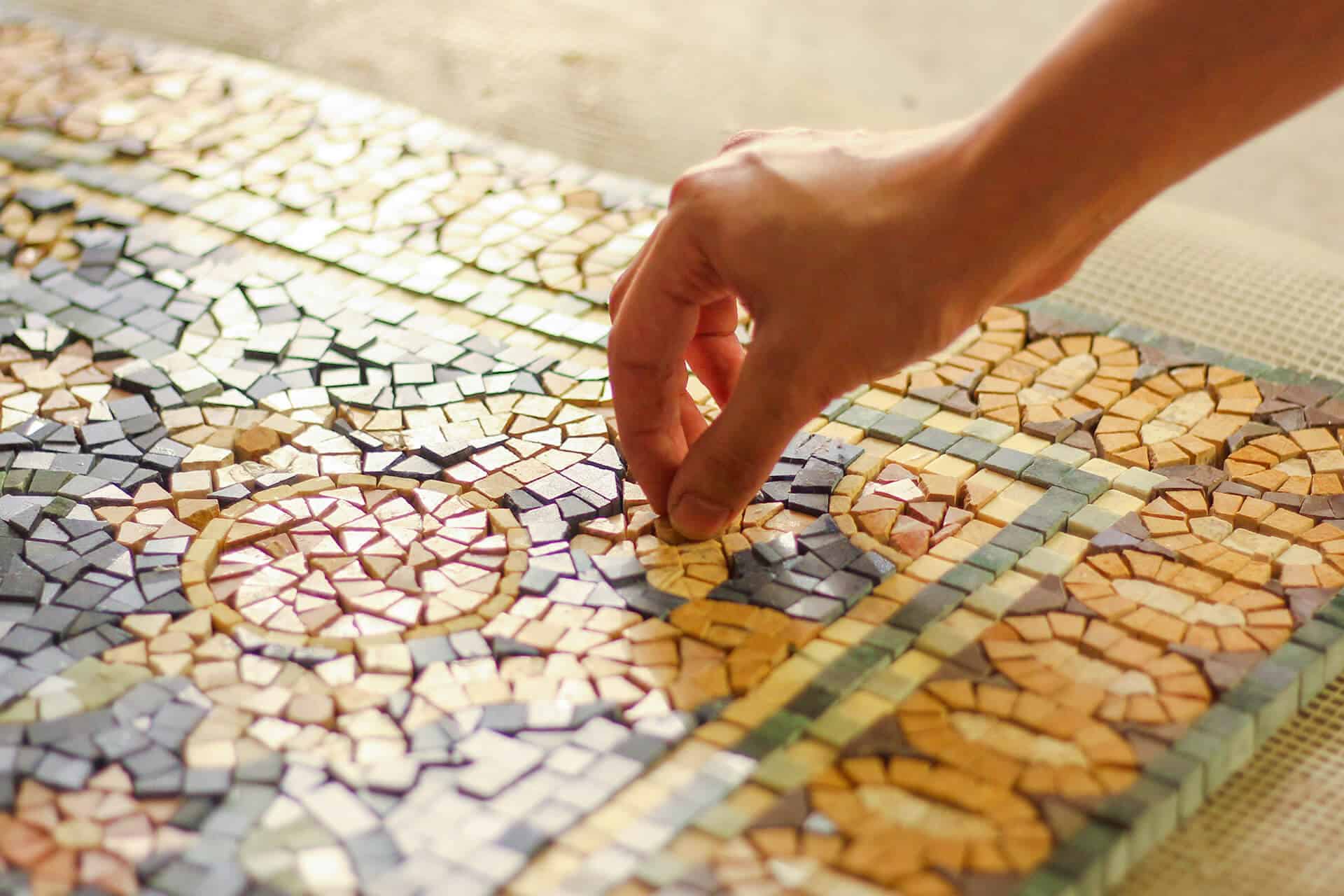
Understanding the Appeal of Mosaic Tiles
Mosaic tiles are one of the most versatile and visually interesting materials you can use in interior design. Known for their intricate patterns, vibrant colours and small size, mosaic tiles can instantly elevate a space whether you’re designing a bathroom, a kitchen, or even an outdoor area. Their adaptability makes them a popular choice, but not all surfaces are suitable for installation. To get the best finish and lasting results, choosing the right surface is key.
Flat, Smooth Walls Are Ideal for Mosaic Application
The first rule of mosaic tiling is that the surface should be as flat and smooth as possible. Unlike larger tiles that can bridge slight imperfections, mosaic sheets are small and flexible, meaning every bump or dip underneath will show through. That’s why freshly plastered walls or properly prepared cement boards make the best base. In kitchens, splashbacks often provide ideal tiling surfaces because they’re small in area, vertical, and already flat.
If the wall has previously been tiled, it’s best to remove old tiles completely and assess the condition of the wall underneath before proceeding. Mosaic tiles need a clean and stable substrate to adhere properly, especially given the number of grout lines involved.
Backer Boards Provide a Reliable Base in Wet Zones
Bathrooms, wet rooms and walk-in showers are some of the most popular spaces for mosaic tiles. In these environments, using moisture-resistant backer boards like cement boards or tile backer panels is essential. These provide a water-resistant, rigid base that won’t warp or soften over time, ensuring your mosaic tiles stay firmly in place even with constant exposure to humidity and splashes.
Proper sealing is also a must, especially when working with natural stone mosaics. Although the tile itself might look impervious, water can seep into the grout and the adhesive layer beneath if the surface hasn’t been adequately prepared.
Floors Must Be Strong and Level
When used on floors, mosaic tiles need a substrate that is solid, secure, and perfectly level. Wooden floors should be overlaid with tile backer boards to prevent movement that can crack the grout or loosen the tiles. Concrete bases must be checked for cracks or signs of damp. The small size of mosaic tiles means they respond poorly to flexing, so any bounce or give in the surface underneath can quickly become a problem.
Thanks to their grippy texture, mosaic tiles are particularly good for shower floors or entranceways where water and foot traffic are frequent. The combination of many grout lines and the small tile format adds natural slip resistance, making them both a practical and beautiful choice.
Using Mosaic Tiles on Curved or Uneven Surfaces
One of the biggest advantages of mosaic tiles is their ability to bend slightly and wrap around curves. This makes them a fantastic solution for tiling columns, bath panels, and curved walls. Unlike large-format tiles that require cutting and mitring, mosaics can be laid directly over gently rounded surfaces—so long as the curve is not too sharp and the base is stable.
Flexible tile adhesive helps in these cases, ensuring the tile sheet conforms closely to the surface. It’s also a popular technique in high-end designs where curves are used to soften otherwise boxy bathrooms or to create sculptural kitchen islands.
Outdoor Surfaces for Mosaic Tiles
Mosaics aren’t just for interiors. With the right materials and preparation, they can be used outside on garden walls, water features or even exterior steps. The key is choosing frost-proof tiles and adhesives that can withstand temperature fluctuations and weather exposure. Porcelain and glass mosaics tend to perform better than ceramic for outdoor use due to their density and low water absorption.
The surface must be clean, dry, and stable—typically rendered concrete, cement board, or specialist exterior sheeting. Any outdoor mosaic project should be treated as a long-term installation, with proper priming and sealing essential to its success.
What to Avoid When Installing Mosaics
Uneven or crumbling surfaces are a recipe for disaster when it comes to mosaics. If the wall or floor is cracked, unstable, or suffering from rising damp, it will almost certainly affect the durability of the installation. Similarly, painted surfaces are not ideal unless the paint is well adhered and sanded to provide a key for the adhesive.
Avoid using standard plasterboard in wet areas—it won’t stand up to moisture over time. Also, be cautious of applying mosaics directly onto timber, especially in damp or high-traffic areas, unless it’s been reinforced and sealed appropriately.
Final Thoughts on Choosing the Right Surface for Mosaic Tiles
Mosaic tiles can create showstopping designs in any room, but their beauty is only as strong as the surface beneath them. Whether you’re working on a bathroom wall, a kitchen splashback, a hallway floor or an outdoor feature, investing time in preparing the correct base will reward you with a long-lasting and professional finish. From moisture-resistant backer boards to clean, level concrete floors, the right surface allows your mosaic tiles to truly shine—and stay securely in place for years to come.

:max_bytes(150000):strip_icc()/__opt__aboutcom__coeus__resources__content_migration__mnn__images__2018__03__shutterstock_1051823762-0b00dcf9cd99473cabaff5546d745b0a.jpg)


